Against the backdrop of the water crisis in the Colorado River Basin, where the country’s largest reservoirs are plunging at an alarming rate, California’s two largest reservoirs — Shasta Lake and Lake Oroville — are facing a similar struggle.
Years of low rainfall and snowpack and more intense heat waves have fed directly to the state’s multiyear, unrelenting drought conditions, rapidly draining statewide reservoirs. And according to this week’s report from the US Drought Monitor, the two major reservoirs are at “critically low levels” at the point of the year when they should be the highest.
Protect your home and car against EMP, solar flare and lightning with the best shield available…
This week, Shasta Lake is only at 40% of its total capacity, the lowest it has ever been at the start of May since record-keeping began in 1977. Meanwhile, further south, Lake Oroville is at 55% of its capacity, which is 70% of where it should be around this time on average.
Shasta Lake is the largest reservoir in the state and the cornerstone of California’s Central Valley Project, a complex water system made of 19 dams and reservoirs as well as more than 500 miles of canals, stretching from Redding to the north, all the way south to the drought-stricken landscapes of Bakersfield.
Shasta Lake’s water levels are now less than half of historical average. According to the US Bureau of Reclamation, only agriculture customers who are senior water right holders and some irrigation districts in the Eastern San Joaquin Valley will receive the Central Valley Project water deliveries this year.
“We anticipate that in the Sacramento Valley alone, over 350,000 acres of farmland will be fallowed,” said Mary Lee Knecht, public affairs officer for the Bureau’s California-Great Basin Region. For perspective, it’s an area larger than Los Angeles. “Cities and towns that receive [Central Valley Project] water supply, including Silicon Valley communities, have been reduced to health and safety needs only.“
Drink clean water at home… Get this filter now…
A lot is at stake with the plummeting supply, said Jessica Gable with Food & Water Watch, a nonprofit advocacy group focused on food and water security as well as climate change. The impending summer heat and the water shortages, she said, will hit California’s most vulnerable populations, particularly those in farming communities, the hardest.
“Communities across California are going to suffer this year during the drought, and it’s just a question of how much more they suffer,” Gable said. “It’s usually the most vulnerable communities who are going to suffer the worst, so usually the Central Valley comes to mind because this is an already arid part of the state with most of the state’s agriculture and most of the state’s energy development, which are both water-intensive industries.”
‘Only 5%’ of water to be supplied
Lake Oroville is the largest reservoir in California’s State Water Project system, which is separate from the Central Valley Project, operated by the California Department of Water Resources (DWR). It provides water to 27 million Californians and 750,000 acres of farmland.
Last year, Oroville took a major hit after water levels plunged to just 24% of total capacity, forcing a crucial California hydroelectric power plant to shut down for the first time since it opened in 1967. The lake’s water level sat well below boat ramps, and exposed intake pipes which usually sent water to power the dam.
Health Ranger Store: Buy Clean Food and Products to heal the world…
Although heavy storms toward the end of 2021 alleviated the lake’s record-low levels, resuming the power plant’s operations, state water officials are wary of another dire situation as the drought worsens this summer.
“The fact that this facility shut down last August; that never happened before, and the prospects that it will happen again are very real,” California Gov. Gavin Newsom said at a news conference in April while touring the Oroville Dam.
According to the DWR, Oroville’s low reservoir levels are pushing water agencies relying on the state project to “only receive 5% of their requested supplies in 2022,” said Ryan Endean, spokesperson for the DWR. “Those water agencies are being urged to enact mandatory water use restrictions in order to stretch their available supplies through the summer and fall.”
The Bureau of Reclamation and the DWR, in concert with federal and state agencies, are also taking unprecedented measures to protect endangered winter-run Chinook salmon for the third drought year in a row.
Reclamation officials are in the process of securing temporary chilling units to cool water down at one of their fish hatcheries.
Shasta Lake, California’s largest water reservoir, is the key source for collecting and delivering large amounts of water through the Central Valley and into the Sacramento River Delta where the California State Water Project (aka California Aqueduct) begins, moving water to Southern California and all regions in between.
Prepare your retirement by investing in GOLD, SILVER and other PRECIOUS METALS…
Both reservoirs are a vital part of the state’s larger water system, interconnected by canals and rivers. So even if the smaller reservoirs have been replenished by winter precipitation, the plunging water levels in Shasta and Oroville could still affect and drain the rest of the water system.
The water level on Folsom Lake, for instance, reached nearly 450 feet above sea level this week, which is 108% of its historical average around this time of year. But with Shasta and Oroville’s low water levels, annual water releases from Folsom Lake this summer may need to be bigger than normal to make up for the other reservoirs’ significant shortages.
California depends on storms and wintertime precipitation to build up snowpack in the Sierra Nevada, which then gradually melts during the spring and replenishes reservoirs.
Facing back-to-back dry years and record-breaking heat waves pushing the drought into historic territory, California got a taste of the rain it was looking for in October, when the first big storm of the season pushed onshore. Then in late December, more than 17 feet of snow fell in the Sierra Nevada, which researchers said was enough to break decades-old records.
But precipitation flatlined in January, and water content in the state’s snowpack this year was just 4% of normal by the end of winter.
Further down the state in Southern California, water district officials announced unprecedented water restrictions last week, demanding businesses and residents in parts of Los Angeles, Ventura and San Bernardino counties to cut outdoor watering to one day a week beginning June 1.
You will ALWAYS have electricity with this portable SOLAR power station…
Gable said as California enters a future much hotter and drier than anyone has experienced before, officials and residents need to rethink the way water is managed across the board, otherwise the state will continue to be unprepared.
Water is supposed to be a human right. But withi this megadrought, it is going to be a new cause of war, even civil wars… [CNN]
StrangeSounds.org is now running ad-free CLICK HERE TO SUPPORT MY WORK… I will send you a small gemstone if you give more than 25$… Thanks in advance!
Here some things to add to your disaster & preparedness kit:
- Protect your home and car with the best EMP, solar flares and lightning shield available…
- Drink clean water at home… Get this filter now…
- Health Ranger Store: Buy Clean Food and Products to heal the world…
- Prepare your retirement by investing in GOLD, SILVER and other PRECIOUS METALS…
- You will ALWAYS have electricity with this portable SOLAR power station…
- Qfiles is another great site for alternative news and information…


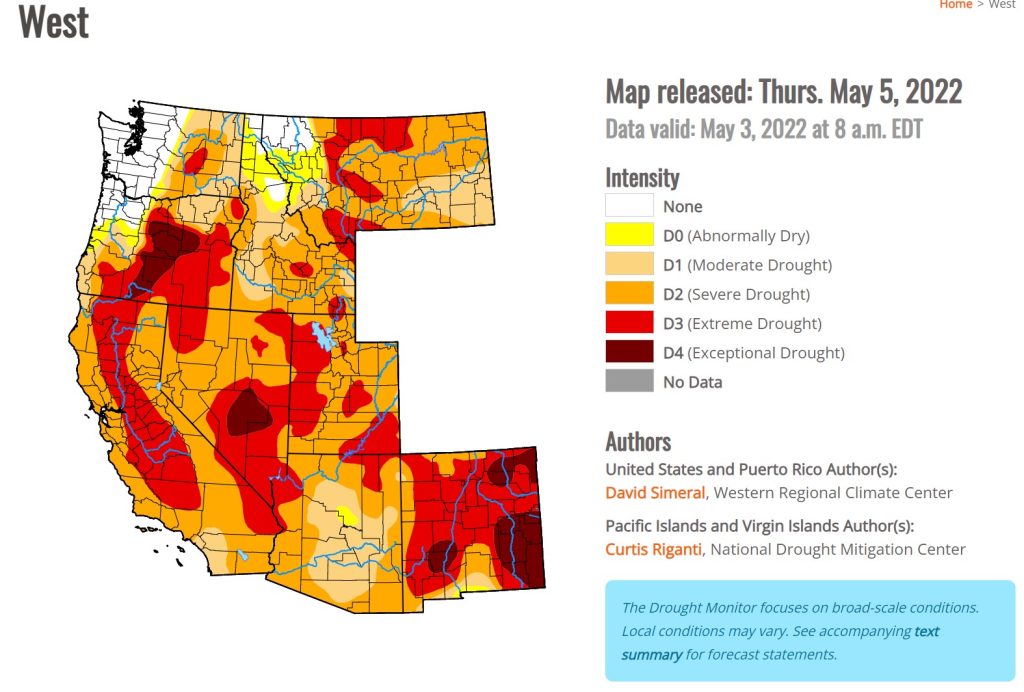


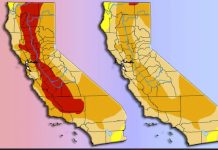
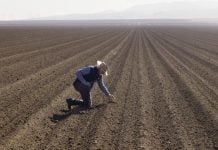
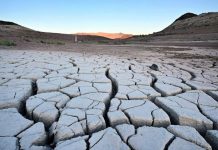
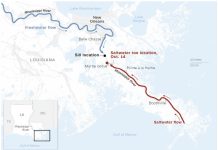
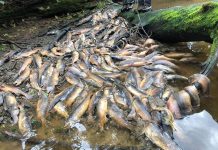
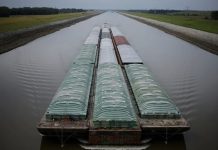

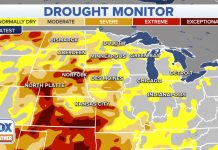

The CABAL, knows the west coast EQ’s are to occur at any moment, so drained the reservoirs, as Shasta or Oroville dams breaking when full, would flood the entire Central Valley. So the resulting water shortages was the lessor of two bad situations. But, they won’t tell you this, as it opens the doors for all the other earth changes that are about to begin………..Keep your eye on the New Madrid fault zone. It’s the trigger for the West Coast. Lot of loud booms, sinking and shaking going on out there and few reported quakes. Mississippi River doing unusual things, like not flowing. Barges could not run a couple years ago. This is because the ground is heaving, and creates shallow areas.
Make sure your elite and your governor cannot get water then you’ll have half the problem solved.
Even if it’s real it’s being exploited all to hell.
Why have most grow areas in draught country?
Why the hell is anyone watering their lawns?
I have considered that maybe the powers that be want lots of people to leave cali.Good way to make it happen no water no power no food.If they aren’t prepared or aren’t from there they will leave.
I
California demonrats are draining all the water out into the ocean! There has been enough snow and rain this year to have a lot more water in Shasta Lake, where I live. This is yet another democrap made problem just like fuel prices and coming food shortages!!
Stage is set for riots and Martial Law Tanks in street of all USA.
World Martial Law is in full progress no food in Iran starts with bread.
https://www.iranfocus.com/en/life-in-iran/45340-report-on-the-major-bread-shortage-in-iran/
State-run daily Javan Online on 6 October wrote: “The problem of bread in Urmia has reached such a level that some people even sell ten tablets of it for 100,000 rials [$0.33] using the mobile software ‘Wall.’”
The “bread” crisis is slowly spreading across the country. Bakeries are in limbo. People are waiting in line for a few loaves of bread, and the government is just talking. It is as if the government is the most undecided. It has neither the power to make a decision nor the power to make any changes. This lockout of the government stems precisely from the complete despair of finding a solution to the situation.
Doubling the dough and 50 percent freight prices have put bakers under a lot of pressure. Bijan Norouz Moghaddam, President of the Traditional Bakers’ Union, said: “We have written to all relevant officials regarding the increase in the price of bread to clarify the task of the bakers, but we are still undecided.”
https://www.amazing-iran.com/types-of-iranian-breads/ write for freedom democracy of all nations.
There’s plenty of water in the Pacific ocean. Build those desalinization plants up and down the left coast. Start in Malibu.
The morons in the State Legislature think it’s more important to condemn the use of plastic drinking straws than to build desalination plants.
man made climate change happens from our skies. The overhead spraying melts away the rain clouds. I watch them, it’s no secret.
Several years ago I went with my daughter to look at a pick up for her some gal was selling out in Lone Pine, CA or like that. The truck seller went on to tell that she and her fiance were out there because his employer went around and did the cleanup/environmental cleanup when CA drained off reservoirs…and she was puzzled as to why, if CA was already short of water why they’d be draining reservoirs. They been working this angle for YEARS.
Manmade crisis is what it is.